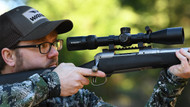What is Eye Relief?
Eye relief is the distance between the eyepiece lens of a rifle scope and the shooter's eye that allows for a full field of view without experiencing vignetting, blackouts, or other visual disturbances. It is an important consideration when selecting a rifle scope because it can affect accuracy, comfort, and overall shooting experience.
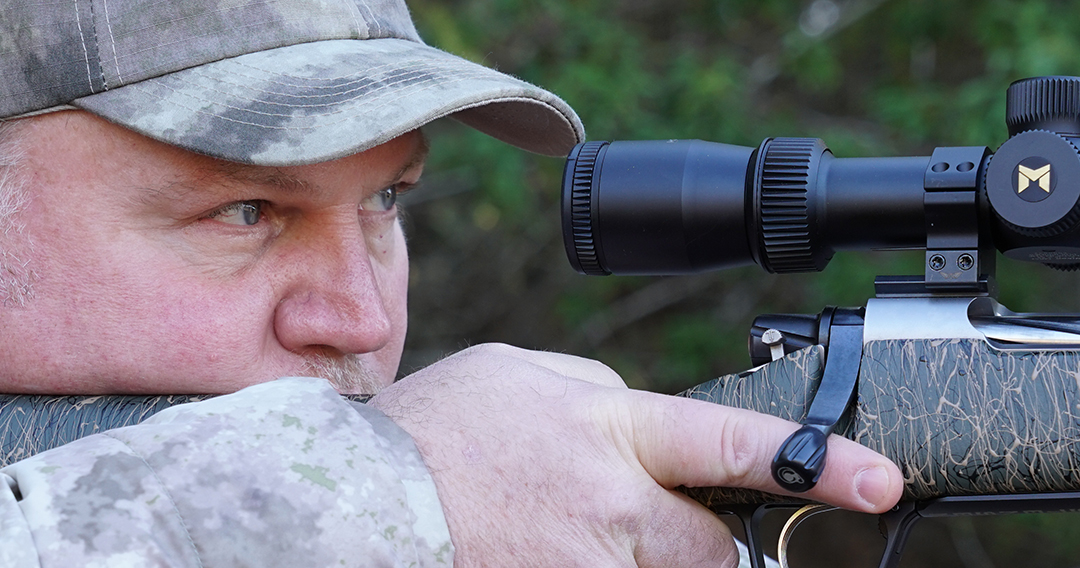
When you mount a scope, it is important to position it so that when drawing and aiming the rifle, you have a full sight picture without vignetting where you must move your head forward or back or up or down. You may be way off target if you aim your rifle with it vignetting.
When shopping for a scope, read the specifications. Most manufacturers will note the eye relief distance. Most modern scopes have generous eye relief, usually around 3 – 5 inches, giving you plenty of mounting space. Higher magnification, older and rimfire scopes may have less eye relief.
Why is Correct Eye Relief Important
Consistency equals accuracy and speed, which is important to hunting, target practice, and competition. When you draw your rifle to aim, you don't want to fiddle, adjusting your eye's position to get a full sight picture. Also, a full sight picture signifies that your head and cheek weld is in the right position with your eye centered with your scope. But you don't want the eyepiece to be too close to your eye where your scope can injure you during the recoil of shooting. Anything under two inches with a heavy recoil rifle could injure your eye. Be sure to wear eye protection when shooting.
Some new shooters will buy a used rifle with a scope already mounted and set to someone else's eye relief, or when having a scope mounted at a gun store, they shoulder a gun and adjust their head position rather than the scope position to get a full sight picture. The scope must be set to you.
How to Check Eye Relief. Eye Relief Test.
First, ensure your rifle is unloaded with the action open to be extra safe, keeping your finger off the trigger and facing in a safe direction.
Adjust your scope to its highest setting if it is a variable scope.
Hold your rifle as you carry it, close the eye you aim with, and draw it to aim. Now open your eye. You should see a full-sight picture. If not, you will need to adjust it.
If you are a hunter or wear tactical gear, the above test and any adjustments should be made with the gear you wear when shooting.
Full-sight picture - Example of Correct Eye Relief You should see this when you draw your rifle without having to readjust your head.
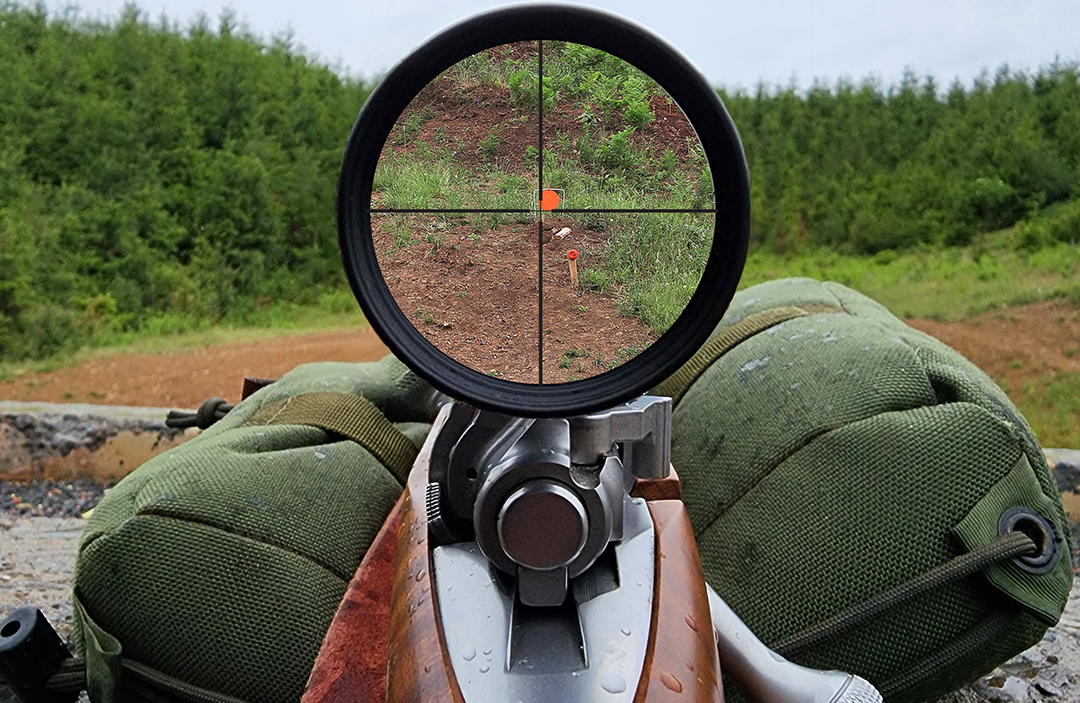
How to Set Eye Relief on a Rifle Scope.
With your rifle unloaded, action open, and safe to handle, mount your scope in the scope rings and snug the rings but do not torque them. The scope should move with a little effort but not so loose that it moves with gravity.
You should put on any gear you wear when you are shooting. For example, if you are a hunter and wear a backpack, the straps can affect the distance of your eye to the eyepiece.
Get into the position you most commonly shoot in.
If it is a variable scope, put it on the highest setting.
With the rifle unloaded and pointing in a safe direction, perform the "Eye Relief Test" mentioned.
Move the scope forward or back until you have a "full-sight picture." There is usually an area about an inch that is good eye relief. It is best to find its sweet spot right in the middle of that so that it will still have good eye relief in different shooting positions.
Example of Eye Relief Too Far – Move the scope back until you get a full-sight picture.
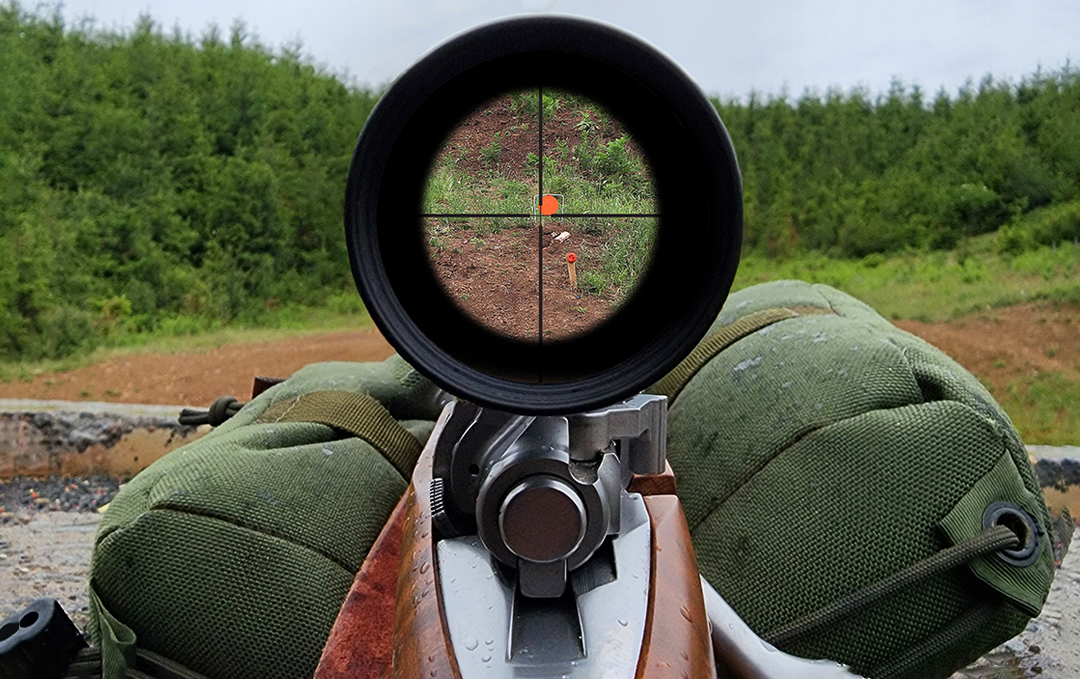
Example of Eye Relief Too Close means you must move the scope forward until you get a full-sight picture.
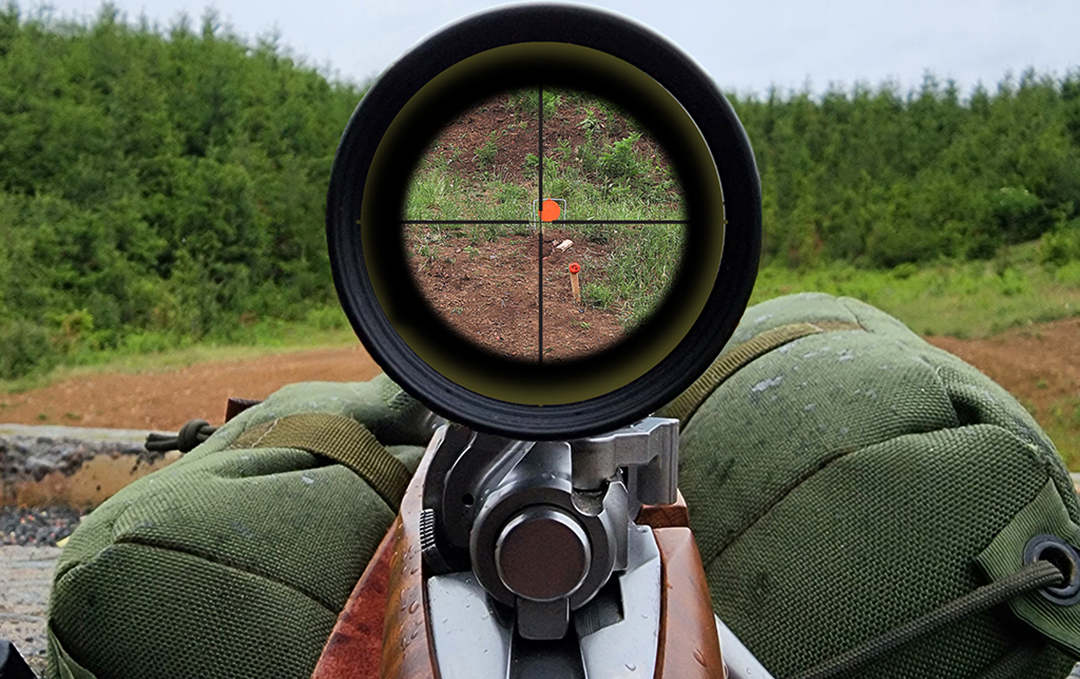
Example of What Can Happen When a Scope Is Too Close.
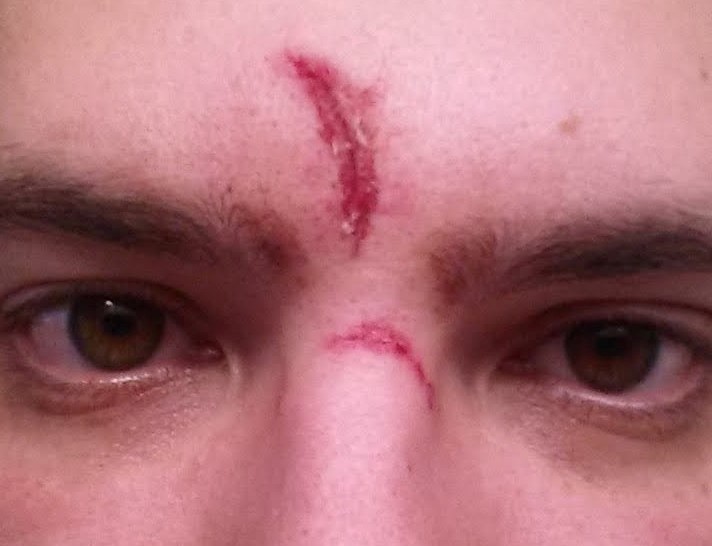
After you have the eye relief set, it is time to level the reticle, being careful not to slide the scope forward or back. Then torque the rings to your scope manufacturer's torque specifications.
Other Factors that Can Affect Eye Relief
What if the Scope Is Too High
If you find your scope too high and you must reposition your cheek weld and eye position up sometimes, you might be able to work that out naturally with a little practice. But if you must lift your cheek off the cheek weld, you may need lower rings. If you can't use lower rings without the objective touching the barrel or need it higher to operate the bolt, you may need a cheek riser or adjustable comb to raise your cheek weld to the correct height.
Example of Eye Relief Too High –
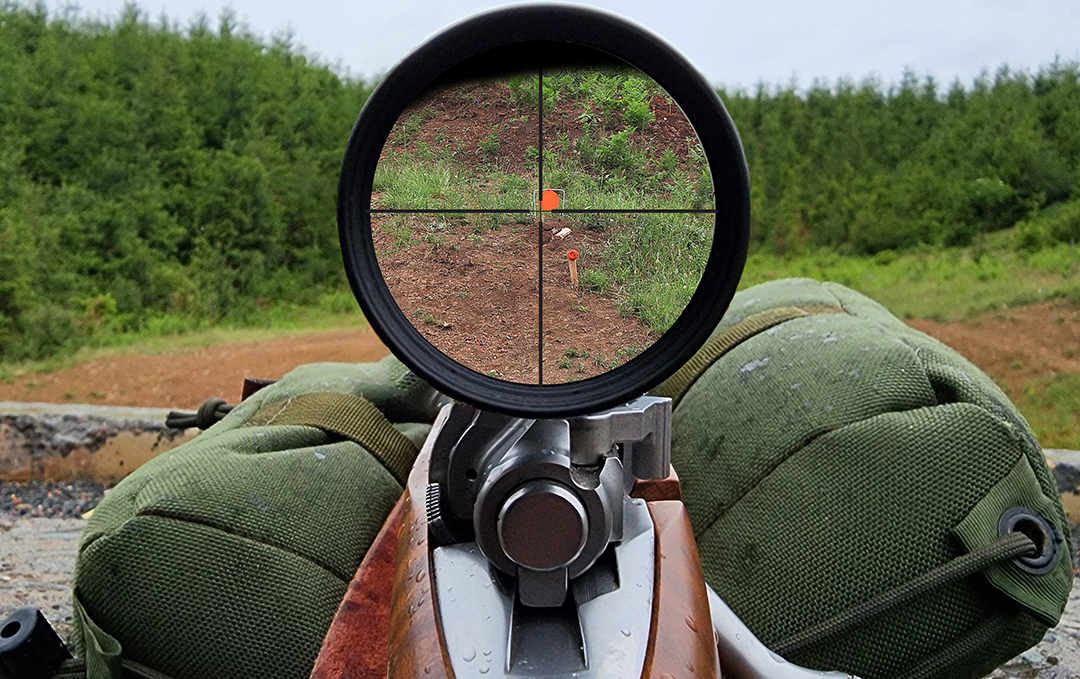
Example of Eye Relief Too Low – Practice drawing the rifle a little higher if that does not solve it, then you may require higher rings.
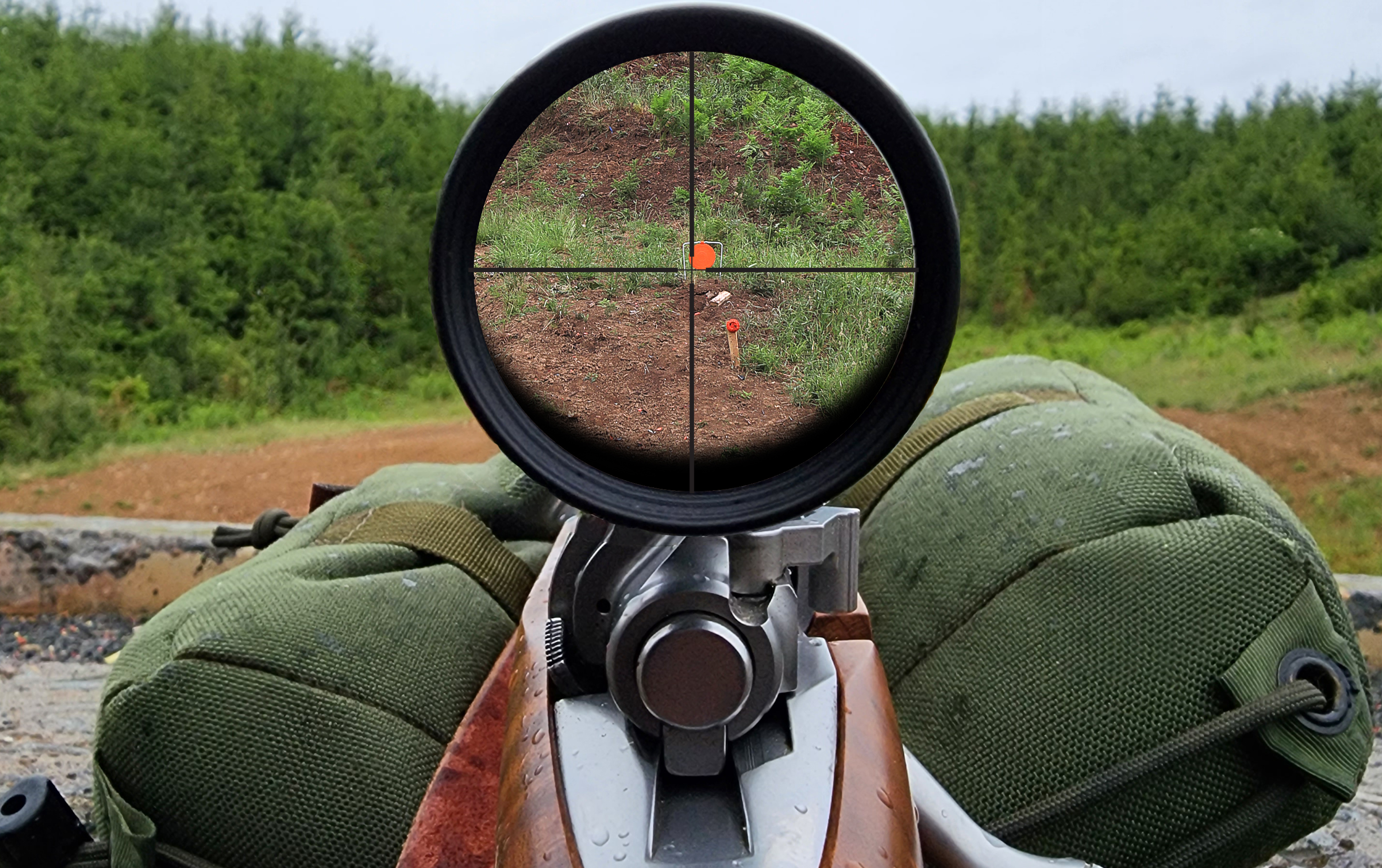
What if You Cannot Get the Scope Relief You Need for the Scope and Rifle You Have?
Due to the design, the length of the objective bell, the location of the adjustment dials, and the amount of eye relief the scope has, some scopes can make it impossible to get good eye relief with a full-sight picture. If you have limited mounting slots, like with a two-piece base, this can usually be solved with a Picatinny Rail or different scope.
What Else to Consider When Mounting a Scope?
When trying to get proper eye relief, do not tighten rings against any sectional bends on the tube, and do not allow the objective to touch the barrel.
Confidence in Every Shot!

